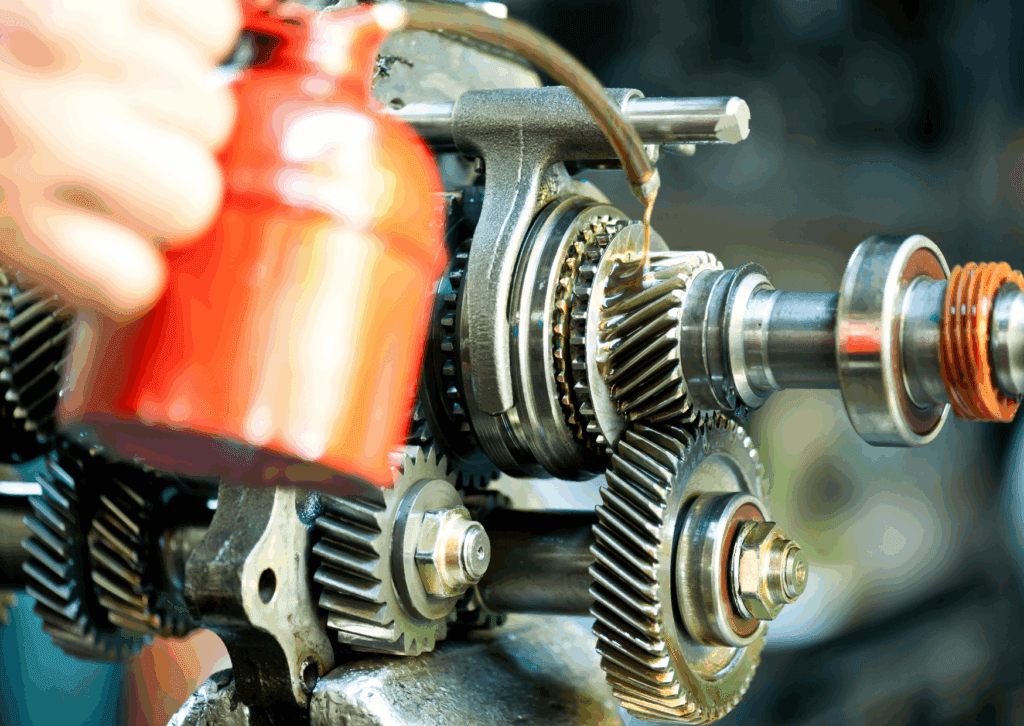When your car starts showing signs of transmission trouble, it can feel overwhelming. For drivers in Loveland, understanding how manual transmission repair works and why it matters can make the difference between a smooth ride and a costly breakdown. This guide breaks down the essentials of manual vs. automatic systems, the role of transmission fluid, and how to spot early signs of broken parts. By the end, you will know why proper care and professional service are key to keeping your vehicle running at its best.
What Does Manual Transmission Repair Involve?

When people hear about manual transmission repair, they often picture mechanics working on a complicated set of gears and parts. In truth, this process can involve many steps depending on what is wrong with the manual transmission. It may mean checking the gear shifter, replacing worn clutch parts, or even fixing leaks in the transmission fluid line. Some repairs are quick, while others require a full rebuild of the system.
Key areas of focus during a repair include:
-
Inspecting the clutch and gears for wear
-
Looking for broken parts that affect shifting
-
Checking seals and bolts for damage
-
Measuring torque specs to ensure everything works properly
-
Making sure the transmission fluid is clean and at the right level
This repair is not just about replacing what is broken. It is about keeping the entire vehicle running smoothly and making sure that drivers do not experience hard shifting or complete transmission failure.
How Does a Manual Transmission Compare to an Automatic Transmission?

Drivers often wonder whether a manual transmission is still worth keeping when so many new cars come with an automatic transmission. Each type has strengths and weaknesses.
-
Manual transmission:
-
More control when shifting gears
-
Generally, lower cost for repairs
-
A sense of connection to the vehicle
-
Can last longer than an automatic if treated well
-
-
Automatic transmission:
-
Easier to drive, especially in traffic
-
Faster learning curve, no stick shift required
-
More common in today’s new cars
-
When choosing between the two, drivers should consider location, driving habits, and comfort level. A manual may give better control on mountain roads near Loveland, while an automatic may feel more convenient for daily commutes.
Why Is Transmission Fluid So Important?

Many people underestimate the role of transmission fluid in keeping a manual transmission running well. This fluid does more than just lubricate. It helps with cooling, reduces error in shifting, and protects gears from grinding.
Ignoring transmission fluid can cause:
-
Increased friction leading to broken parts
-
Overheating that damages the engine and shafts
-
Poor lubrication that leads to hard shifting
The process of maintaining fluid is simple but essential. A professional shop will complete a check, drain out the old fluid, replace seals if needed, and refill it with the correct type. Making a mistake, such as using the wrong fluid, can cause damage to the driveshaft and lead to failure.
What Role Does the Stick Shift Play in Transmission Performance?

The stick shift is more than just a lever for shifting gears. It is the driver’s main input into the transmission system. If the gear shifter feels loose, sticks, or makes odd noises, that can be a sign of broken parts deeper inside the system.
Common stick shift issues include:
-
Worn bushings that make the gear shifter feel sloppy
-
Difficulty engaging gears, especially first or reverse
-
Hard shifting suggests clutch or linkage trouble
-
Resistance when you pull into a gear, showing misalignment
When technicians inspect the stick shift, they also check related parts like the clutch linkage, shafts, and seals. This is often where small problems can be caught before they become big ones.
What Broken Parts Cause the Most Trouble in a Manual Transmission?

Even the strongest manual transmission can suffer from broken parts over time. Some of the most common failures include:
-
Clutch plates are wearing down and slipping
-
Seals that leak transmission fluid
-
Damaged shafts or driveshaft connections
-
Worn bolts that no longer hold pieces tight
-
Error in alignment that puts stress on gears
If these problems are ignored, they can lead to bigger failures that require a rebuild or even sourcing parts from a junkyard. A single mistake in driving, like forcing a shift, can cause a break that shortens the life of the transmission system.
How Do Technicians Approach the Repair Process?


At a professional shop, the repair process begins with diagnosis. The technicians may test drive the car to feel for hard shifting, noises, or vibration. Then they will pull the transmission apart to look at the details.
The job of repair usually involves these steps:
-
Checking for leaks in fluid lines
-
Inspecting clutch, shafts, and bearings
-
Measuring torque specs with the right tools
-
Replacing broken parts and installing components
-
Putting everything back together with new seals and bolts
This is not the kind of job most folks can figure out with a YouTube video or a quick blog search. While you can watch or search for repair steps, only a trained mechanic has the experience to treat each vehicle with the quality and care it needs.
What Are the Costs and Options for Manual Transmission Repair?

The cost of manual transmission repair depends on how much needs to be fixed or replaced. A small repair like replacing a seal may be affordable, while a full rebuild can cost much more.
Factors that affect cost include:
-
New cars vs. older manuals
-
Availability of parts (sometimes from a junkyard)
-
The location of the shop and labor rates
-
The process required to complete the repair
Drivers should plan ahead and budget for possible repairs. While the price can seem steep, it is usually less than buying a new car or replacing the entire engine.
Why Should You Choose Professional Service in Loveland?

While it may be tempting to attempt a DIY fix with tools, the risks are high. A mistake could lead to bigger errors that cost more to repair later.
Choosing a professional service in Loveland means:
-
Skilled technicians who know how to treat a manual transmission properly
-
Access to the right tools and replacement parts
-
Clear plan for repair and maintenance
-
Work completed to factory torque specs
-
A service experience that saves you money in the long run
If you live in or near Loveland, the most helpful option is to trust local experts who understand the unique driving conditions of the area.
Where Can You Get Reliable Manual Transmission Repair in Loveland?
If your manual transmission is showing signs of trouble, such as hard shifting, noises, or leaks, the best step is to visit a trusted local shop. One of the most reliable places to turn is Metric Motors in Loveland.
They provide:
-
Full manual transmission repair and replacement services
-
Certified technicians with years of experience
-
Customer-first service, including loaner cars and updates
-
Repairs done with quality tools and parts
-
A reputation for treating folks and their vehicles with care
Call or schedule a trip to Metric Motors today. Don’t wait until a small issue becomes a costly mistake; get your transmission fixed properly the first time.
Final Thoughts
Taking care of your manual transmission is one of the smartest things you can do for your vehicle. From monitoring transmission fluid to paying attention to signs like hard shifting, the steps are simple but important. A professional shop in Loveland can complete the job the right way, saving you time, stress, and money.
Whether it is replacing broken parts, checking clutch wear, or preventing a total rebuild, the right repair keeps your car running strong. For drivers in Loveland, the answer is simple: visit Metric Motors for manual transmission repair done with care, skill, and efficiency.
Works Cited
“Maintenance Schedule.” U.S. Department of Transportation, National Highway Traffic Safety Administration (NHTSA), www.nhtsa.gov.
“Manual vs. Automatic Transmissions.” U.S. Department of Energy, Alternative Fuels Data Center, afdc.energy.gov.
“Transmission Repair and Replacement.” AAA Automotive Repair Information, www.aaa.com/autorepair.
“Vehicle Maintenance Basics.” Federal Trade Commission (FTC), consumer.ftc.gov.
“Understanding Transmission Fluid.” Society of Automotive Engineers (SAE), www.sae.org.
Frequently Asked Questions
1. How do I know if my manual transmission needs repair?
Look for warning signs such as grinding when shifting gears, difficulty engaging the stick shift, leaking transmission fluid, or unusual noises. These are common indicators of broken parts or wear inside the system.
2. Is repairing a manual transmission cheaper than fixing an automatic transmission?
Yes, manual transmission repair is generally less expensive than fixing an automatic transmission. While the exact cost depends on parts and labor, manuals often have simpler systems that are easier to fix or rebuild.
3. How often should transmission fluid be changed in a manual car?
Most manufacturers recommend replacing transmission fluid every 30,000 to 60,000 miles, though this can vary by vehicle. Old or dirty fluid can lead to hard shifting and damage to gears and shafts if ignored.
4. Can I drive my car if the transmission is making noise?
Driving with transmission noise is risky. A whining or grinding sound can mean broken parts, worn bearings, or low fluid. Continuing to drive may break more components, increasing the cost of the job.
5. Why should I choose professional technicians for manual transmission repair?
A professional shop has the right tools, training, and technicians to follow proper torque specs and replace parts safely. Attempting a DIY fix may lead to mistakes that shorten the life of your transmission.





